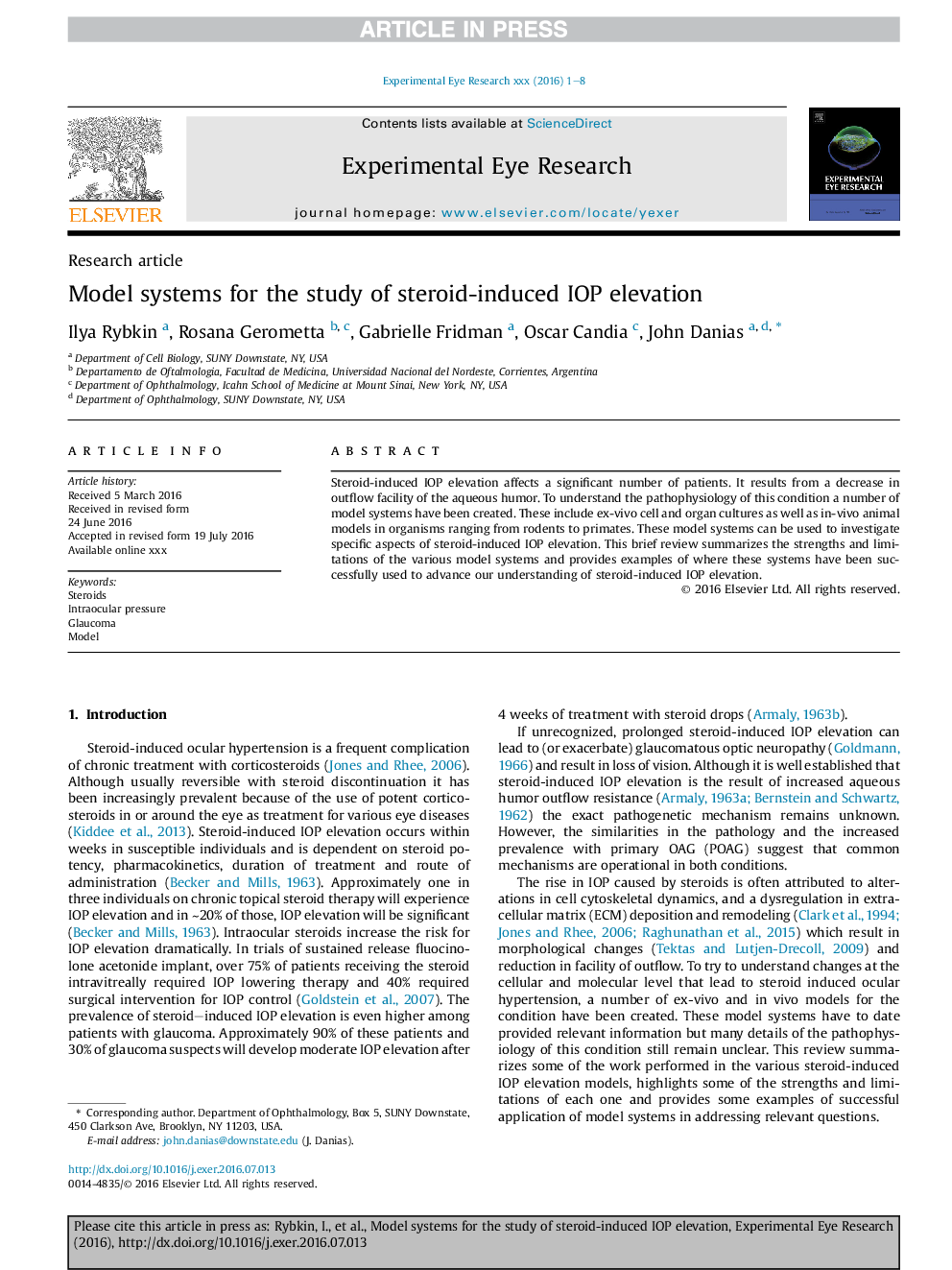| Article ID | Journal | Published Year | Pages | File Type |
|---|---|---|---|---|
| 5704108 | Experimental Eye Research | 2017 | 8 Pages |
Abstract
Steroid-induced IOP elevation affects a significant number of patients. It results from a decrease in outflow facility of the aqueous humor. To understand the pathophysiology of this condition a number of model systems have been created. These include ex-vivo cell and organ cultures as well as in-vivo animal models in organisms ranging from rodents to primates. These model systems can be used to investigate specific aspects of steroid-induced IOP elevation. This brief review summarizes the strengths and limitations of the various model systems and provides examples of where these systems have been successfully used to advance our understanding of steroid-induced IOP elevation.
Related Topics
Life Sciences
Immunology and Microbiology
Immunology and Microbiology (General)
Authors
Ilya Rybkin, Rosana Gerometta, Gabrielle Fridman, Oscar Candia, John Danias,
